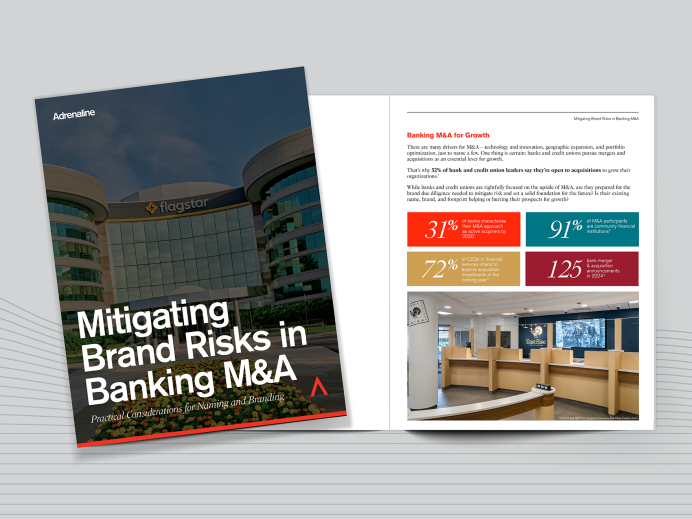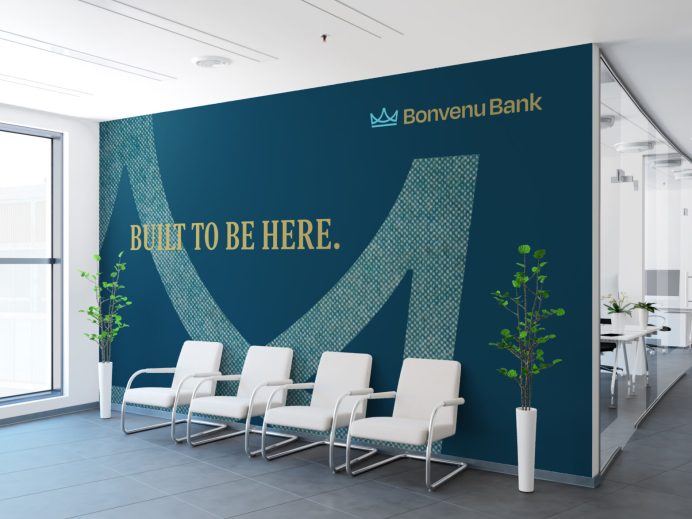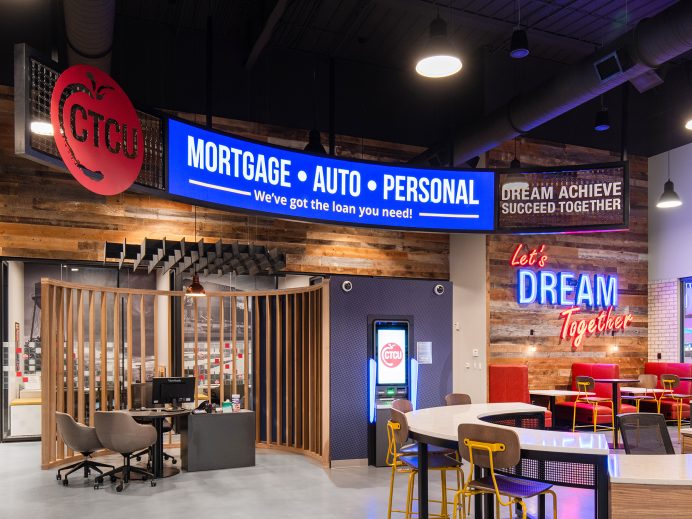Brand Distinction
In an industry full of similar offerings, creating distinction in financial services remains a continual challenge for banks and credit unions. “Financial institutions often struggle to create a distinctive identity,” according to the Financial Brand. “Because so many deploy almost identical messaging and product positioning, they can blur together in an increasingly crowded landscape.” Even more, many bank brands contain names with heritage words – like Trust, Citizens and First – that result in market and consumer confusion. Brand distinction drives awareness. If a bank can’t stand out among competing financial brands, they can’t grow.
Growth is so imperative for consumer brands that three out of four companies have focused on their brand over the past three years. But if a company’s name is working against them, no amount of marketing can solve that fundamental problem. In brand-building, having an ownable name and brand identity is foundational to every other effort going forward. “As the most accessible brand element and the one that typically endures the longest, choosing an effective brand name is paramount,” according to Forbes on brand naming. And as we explored in Renaming for Relevance, Pt I, rebranding is way to jumpstart a journey toward growth.
Memorability Matters
In naming, understanding how names live in the real world is essential. Human nature is going to want to do two things with a name – make it easy to remember and easy to communicate. Even when a company chooses the path of least resistance and instead of renaming, uses an acronym to overcome other issues with the brand – like geographic limitation or audience relevance – memorability will remain an issue. People aren’t going to necessarily know or associate a brand’s legacy with the letters in an acronym. Especially in terms of new customer or new member acquisition, acronyms are just a meaningless set of letters.
With acronyms, a brand name becomes a shorthand or a nickname. Nicknames nod to another element of human nature – this penchant people have for shortening things. That’s why we give one another nicknames, to make a name simpler and shorter to say or communicate. But the problem with shorthands like acronyms is that there is no inherent meaning in what that nickname is meant to convey. Brands that choose this direction lose the opportunity to have an ownable name that differentiates and distinguishes them among their peers.
Even more, a hidden cost of an acronym is the significant effort (and budget) that goes into educating around the acronym itself. Since this shorthand name doesn’t represent anything in particular, the brand now has to create meaning for the acronym. This puts brand in the position of solving another specific issue, instead of building around a name that represents a relevant idea or powerful concept. Using an acronym strips away any meaning from the previous brand. While that brand surely had limitations, it did often represent the purpose of the institution – which may have been more timeless, more ownable, and more memorable.
Next Steps in Naming
If a bank or credit union is facing these challenges, fear not. There are actionable next steps to take. For institutions considering renaming, they need to be armed with research that makes a case for change. Brands considering change aren’t going to understand the inherent challenges of an acronym, until they see what the market sees – not what their current customers see, who will have familiarity bias. Market research can help to uncover what people think the name represents, which is often entirely different than where the name was born and what the letters were initially meant to stand for.
Depending how long the acronym has been in use in the market, research can also uncover the way people pronounce the name (for good or bad) in everyday usage. Are they spelling out the letters or shortening into a form that’s not only unmemorable, but may have unintended meanings through the hidden nuances of pronunciation? A holistic research effort will show not only that acronym name might be limiting, but why and how it’s restrictive. Research can answer all of those questions, surface additional problems with the brand, and ultimately present the beginnings of a path forward toward a new name with renewed relevance.
To learn more brand and marketing strategies that can get your bank or credit union ready for growth, or to speak with one of Adrenaline’s experts, contact us today.
Adrenaline is an end-to-end brand experience company serving the financial industry. We move brands and businesses ahead by delivering on every aspect of their experience across digital and physical channels, from strategy through implementation. Our multi-disciplinary team works with leadership to advise on purpose, position, culture, and retail growth strategies. We create brands people love and engage audiences from employees to customers with story-led design and insights-driven marketing; and we design and build transformative brand experiences across branch networks, leading the construction and implementation of physical spaces that drive business advantage and make the brand experience real.





